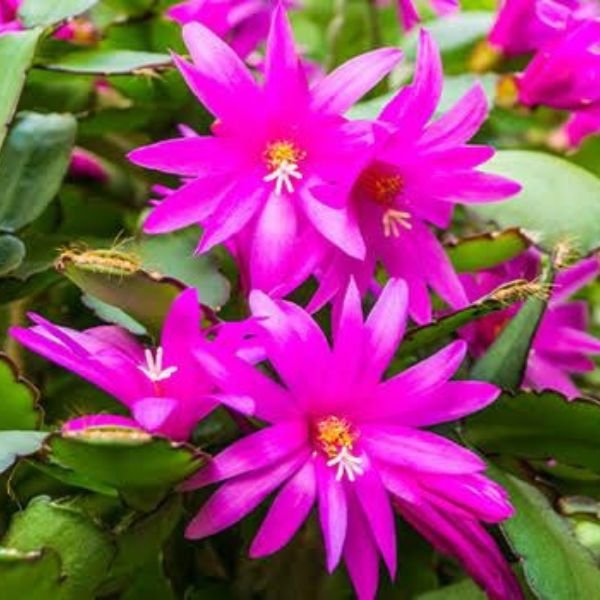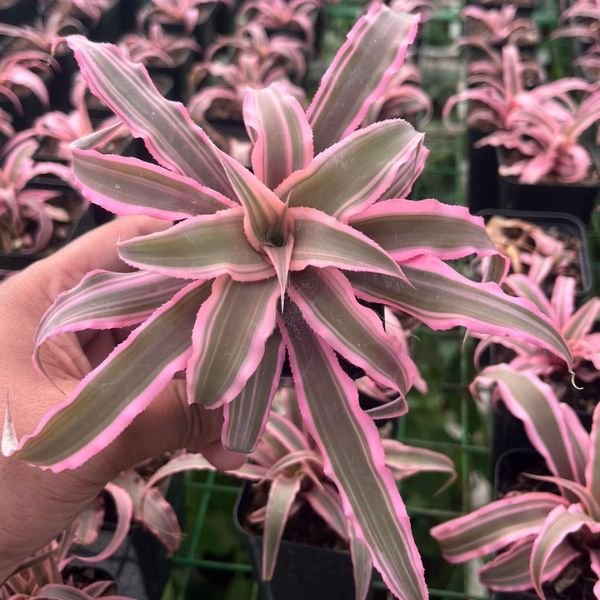The Cymbidium orchid, renowned as the boat orchid, is an elegant and colorful plant with long leaves and a variety of flower colors including green, yellow, pink, and white. These orchids are native to Asian areas like the Himalayas and Australia and can adapt to cool temperatures. Depending on the species, Cymbidium orchids bloom in either spring or autumn and produce a tall spike with 12-30 multi-flowered blooms. Their ease of maintenance and low requirements make them excellent placeholders in indoor areas. Caring for Cymbidium orchids involves monitoring for pests and providing optimal growing conditions. These orchids have a majestic appearance and often emit a delightful fragrance. Flower lovers will be pleased to know that Cymbidium orchid blooms can last for up to three months.
In the summer, nourished pseudobulbs are produced, while stunning spotted lip blooms appear in the spring and winter. These orchids are epiphytic, meaning they grow on other plants, and are a part of the Orchidaceae family. Cymbidium orchids are an all-in-one station of beautiful, cold-tolerant, multi-flowered plants. With their long-lasting blooms and unique growth habits, these orchids are a wonderful addition to any plant lover\’s collection.
Temperature
Cymbidium orchids prefer a mild warmth that\’s not too hot or too cold. While they can tolerate colder temperatures than other orchids, they don\’t fare well in extremely hot or cold conditions. Frost is a big no-no for these delicate plants. Ideally, temperatures ranging from 15°C to 22°C during the day, and from 13°C to 18°C at night, are best for their growth and survival.
Lighting
Proper lighting is crucial for the healthy growth of Cymbidium orchids and to ensure that they bloom beautifully. For indoor planting, place the orchids in an area that receives bright but indirect light, such as an east or southeast-facing windowsill or a well-lit balcony. When planting outdoors, always avoid direct sunlight as it can be harmful to the orchids. Instead, choose a shaded area with bright morning sunlight. If natural light is insufficient, fluorescent lights or LEDs can be used to supplement it. Note that dark green leaves indicate a lack of proper lighting and may require adjustments to maintain the health of the orchids.
Humidity
To provide a comfortable and conducive atmosphere for Cymbidium orchids, it\’s recommended to maintain humidity levels between 50% and 60%. Fortunately, there are three effective ways to increase humidity levels – using a humidifier, misting the orchids, or utilizing a humidity tray. You place a humidity tray, a container filled with water and pebbles, at the base of your orchids to create a moist environment around them. Out of the available options, utilizing a humidity tray and humidifier proves to be more effective than misting alone, delivering optimal results for your orchids.
Watering
Maintaining the appropriate moisture levels is crucial for the healthy growth of Cymbidium orchids. Watering twice a week is usually sufficient, but the frequency may vary based on the ambient temperature. Daily during the growing season, you should monitor the moisture level of the medium and water accordingly. Watering your orchids in the morning is advisable as it allows them to absorb moisture throughout the day and dry out by nightfall. It\’s best to avoid letting the medium completely dry out before watering, but a slightly dry surface is generally acceptable. Water your plants only enough to moisten the soil, not to the point of waterlogging. Excess water can lead to root rot.
Fertilization
Weekly fertilization during a Cymbidium orchid\’s growing periods enhances the vibrancy of its blooms. To maintain the proper balance of nutrients, it is necessary to fertilize the plant according to the watering schedule. For optimal growth and health of Cymbidium orchids, a balanced NPK fertilizer with a 20-20-20 ratio is highly recommended. In addition to this, high-phosphorus fertilizers can also be used during growing periods. For the best results, applying half-strength fertilizer based on the temperature and watering needs of the plant can be beneficial. During the dormant period, these orchids don\’t need much fertilization. However, if the plant requires it, you can fertilize it once a month after checking.
Potting, Medium, and Repotting
Choosing the right pot size is crucial when potting Cymbidium orchids. Choose a small container based on the size of your plant. For potting medium, a good mix of bark and moss or also choosing from fern, charcoal, or coco peat is ideal for these orchids. It\’s important to ensure that the pot has drainage holes to prevent excess water from reaching the roots. Adequate drainage is essential for all orchids, including Cymbidiums. Repotting your orchids is necessary when you notice that the roots are not getting enough space to grow. The spring season is the best time for repotting, and choosing a larger pot than the previous one is essential. Soaking the root ball of the orchid before repotting is beneficial for the plant. During the repotting process, gently remove the potting medium from the roots without causing any harm to them. Use sterilized pruners and scissors to remove any dead or damaged roots. For the new potting medium, select bark, and water the plant after a few days or weeks.
Pest & Diseases
Regularly inspecting the leaves and flowers of Cymbidium orchids is essential to keep them free from common pests like mealybugs and spider mites. One effective method is to apply insecticides, isopropyl, or homemade pesticides to the affected areas. If you overwater your plants, they can develop diseases like black rot, root rot, leaf spots, and flower spots. To treat these diseases, apply fungicides and remove the affected parts of the plant.
Lack of fertilization and proper lighting can lead to blooming issues in Cymbidium orchids. All orchid lovers want to avoid pest problems and diseases and ensure the health and longevity of their orchids. To hit that goal, consistently monitor and fulfill all the requirements of Cymbidium orchids. By doing so, you can enjoy beautiful blooms and healthy orchids.






